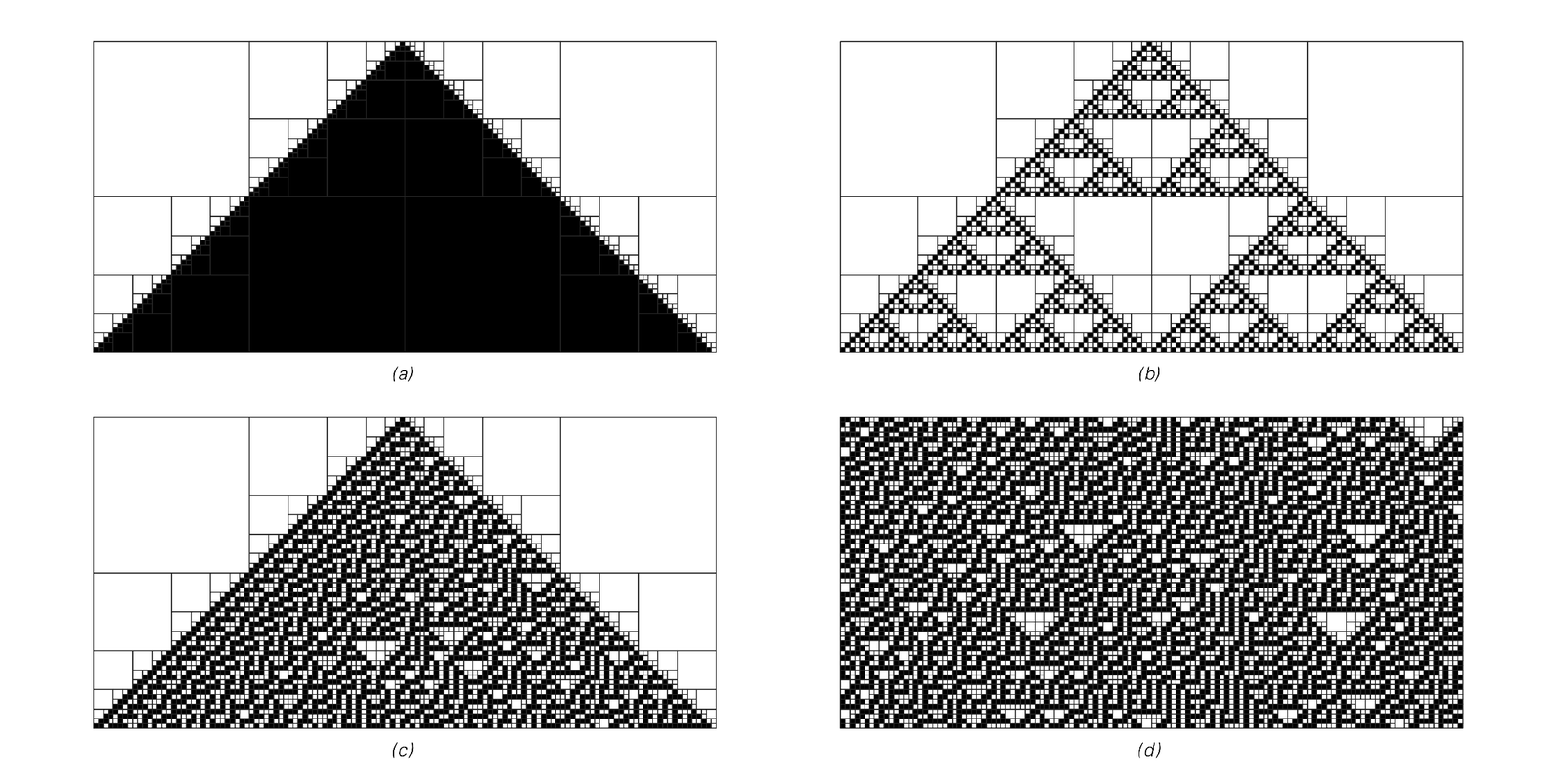one-dimensional blocks. And as the pictures at the bottom of the facing page demonstrate, this procedure can lead to substantial compression. Particularly notable is what happens in case (d). For even though this pattern is produced by a simple one-dimensional cellular automaton rule, and even though one can see by eye that it contains at least some small-scale regularities, none of the schemes we have discussed up till now have succeeded in compressing it at all.


Examples of encoding by two-dimensional recursive subdivision. The idea is to use a generalization of a two-dimensional substitution system, in which at each step a square either remains the same or is subdivided into four small squares. The encoding specifies which choice is made at each step for each square. The method is analogous to the quadtree representation sometimes used in computer graphics. The substantial compression seen even in case (c) is a consequence of the large areas of uniform white that are present.



